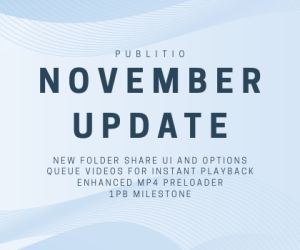What is video and image processing?
Video and image processing refers to the manipulation of digital video and image files to produce a desired result. This can involve a wide range of operations, such as resizing, cropping, rotating, applying filters or effects, and combining multiple images or videos into a single file. Video and image processing is used in a variety of different contexts, including web development, graphic design, video editing, and computer vision. In web development, for example, video and image processing can be used to optimize the performance and appearance of video and image files on a website, or to provide users with the ability to edit and manipulate images and videos within the app. There are many different tools and technologies that can be used for video and image processing. These include server-side scripting languages such as PHP and Python, as well as dedicated image and video editing software such as Adobe Photoshop and Adobe Premiere. Cloud-based solutions are also becoming increasingly popular, as they provide a convenient and scalable way to process large numbers of video and image files. In summary, video and image processing is the manipulation of digital video and image files to produce a desired result. It is a widely-used technology in many different fields, and is essential for optimising the performance and appearance of video and image content on the web.
What is on-the-fly video and image processing?
On-the-fly video an image processing and image and video URL-based transformations are techniques for modifying or transforming images and videos using the URL of the source file. This can be useful for resizing, cropping, or otherwise modifying an image or video without having to download the file and manipulate it locally. For example, you could use a URL-based transformation to resize an image to a specific dimension, or to crop a video to a certain frame size. These transformations can be performed by a server or by a client-side application, depending on the specific implementation.
How to process videos and images on the fly?
There are several ways to process videos and images on the fly. One approach is to use a server-side language like PHP or Python to create a server-side script that can process the video or image as it is being uploaded to the server. This approach allows you to apply real-time processing to the video or image, such as applying filters or performing face detection.
Another approach is to use a client-side language like JavaScript to create a web-based application that can process the video or image on the client side. This approach allows the user to see the processed video or image in real-time as they are uploading it to the server.
In either case, it is important to use optimised algorithms and to carefully consider the performance and scalability of your solution to ensure that it can handle large volumes of data and provide a smooth user experience.
Simplest approach is to use URL-based transformations for processing, This technique consists of modifying certain option param and extension in URL of a image or video, to create derivates out of the original media file.
On-the-fly image processing with publitio
Publitio is a cloud-based media management platform that allows users to easily upload, manage, and deliver their media files. One of the features of Publitio is the ability to perform URL-based image transformations, which allows users to manipulate and transform their images by appending specific parameters to the image URL. This can be useful for resizing, cropping, or otherwise modifying an image without having to download and edit the image file directly. To use this feature, you would simply append the desired transformation parameters to the image URL, and Publitio will automatically apply the transformations and deliver the modified image. For example, if you want to resize an image to a specific width and height, you could append the following parameters to the image URL:
https://media.publit.io/file/w_400,h_300,c_fill/butterflies.jpg
This would resize the image to a width of 400 pixels and a height of 300 pixels, with cropping set to fill. Publitio supports a wide range of transformation options, so you can easily tailor your images to fit your specific needs.
On-the-fly video processing with publitio
In addition to image transformations, Publitio also supports on-the-fly video processing. This means that you can upload your video files to Publitio and then perform various transformations and manipulations on the video without having to download and edit the video file directly. This can be useful for tasks such as resizing, cropping, or changing the video's codec, bitrate, or other parameters. To use this feature, you would simply append the desired transformation parameters to the video URL, and Publitio will automatically apply the transformations and deliver the modified video. For example, if you want to resize a video to a specific width and height, you could append the following parameters to the video URL:
https://media.publit.io/file/w_640,h_480,c_fill/tummy.mp4
This would resize the video to a width of 640 pixels and a height of 480 pixels, with cropping set to fill. Publitio offers a wide range of transformation options, so you can easily tailor your videos to fit your specific needs.
Reference
https://medium.com/@taylorhughes/on-the-fly-media-upload-processing-with-go-73995ffe10f3
https://stackoverflow.com/questions/25506217/on-the-fly-mp4-processing
https://militaryembedded.com/unmanned/payloads/video-processing-the-fly
https://blog.imgix.com/2022/02/23/on-the-fly-image-processing




